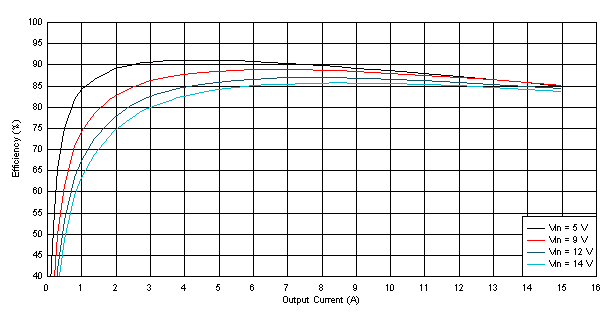SNVU753A November 2019 – May 2021 TPS542A52
- Trademarks
- 1Introduction
- 2Description
- 3TPS542A52EVM-059 Bottom Circuit
- 4TPS542A52EVM-059 Top Circuit (Small Layout Area Design)
- 5TPS542A52EVM-059 PCB Layout
- 6List of Materials
- 7Revision History
3.3.4 Efficiency
Figure 3-2 shows the efficiency of the TPS542A52EVM-059 when operating in forced continuous-conduction mode (FCCM). The light-load efficiency can be improved by operating the converter in DCM as described in the TPS542A52 data sheet. The default setting on the EVM is FCCM operation.
 Figure 3-2 Efficiency - FCCM,
fsw = 1000 kHz, Tamb = 25°C
Figure 3-2 Efficiency - FCCM,
fsw = 1000 kHz, Tamb = 25°C